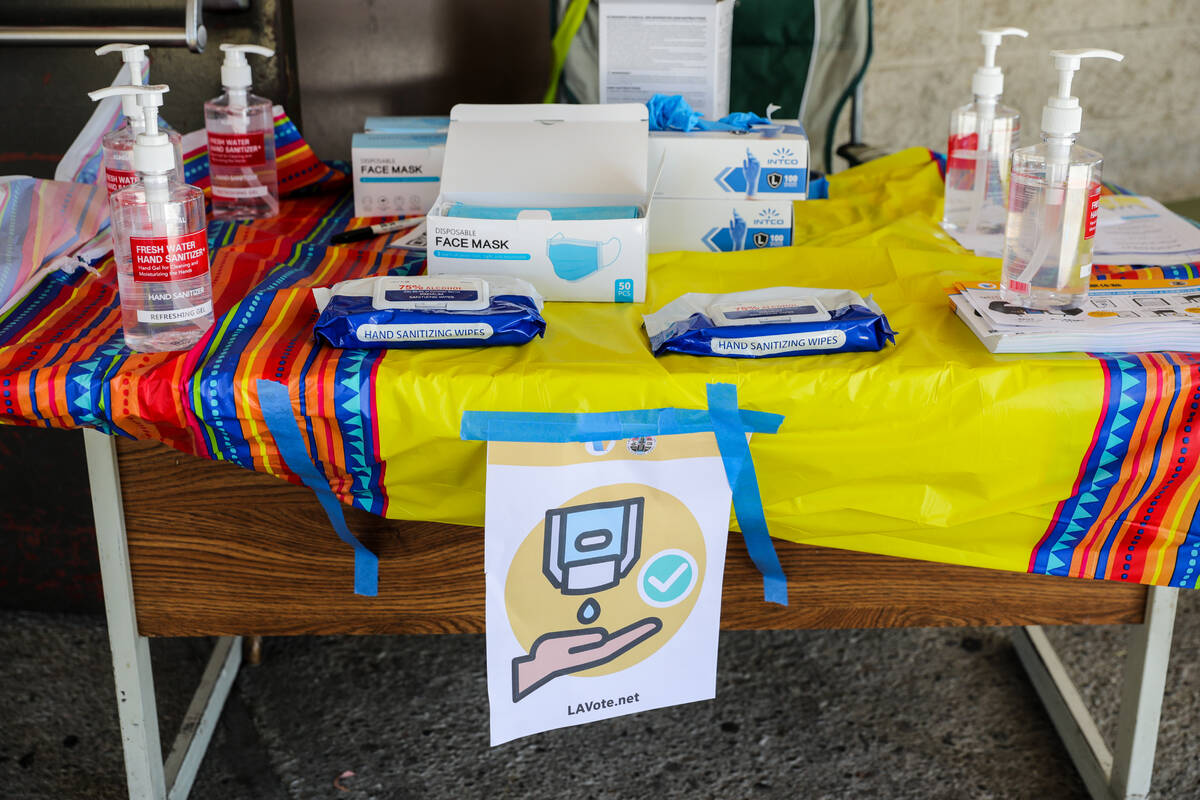Ultra-contagious coronavirus subvariants fuel spread across California
LOS ANGELES — In a sign of how the new coronavirus wave continues to spread across California, two-thirds of the state’s counties are now in the high COVID-19 community level, in which the U.S. Centers for Disease Control and Prevention recommends universal masking in indoor public spaces.
This comes as health officials are warning of concerning weeks ahead as two new ultra-contagious omicron subvariants — BA.4 and BA.5 — spread. Experts believe the subvariants, which are are not only especially contagious but also capable of reinfecting those who have survived earlier omicron infection, are a major factor behind the continued persistence of coronavirus transmission across California.
So far, Los Angeles County health officials have not imposed new masking rules. But they have warned that might be necessary, perhaps later in July, if new coronavirus-positive hospitalizations continue to rise. Though experts are concerned, there is still uncertainty about how serious a summer wave will get.
“With the continued increase in cases, and now as you’re seeing the corresponding increase in hospitalizations … we’re really worried,” L.A. County Public Health Director Barbara Ferrer said Thursday.
The California Department of Public Health has strongly recommended universal mask wearing in indoor public spaces ever since the state’s universal mask order expired in February.
On Thursday, the most populous counties in California that entered the high COVID-19 community level for the first time since spring began are Kern, San Francisco, Ventura and San Mateo.
Ventura County on Thursday became the first Southern California county to enter the high COVID-19 community level since the first omicron wave faded.
COVID-19 community levels factor in coronavirus case and hospitalization rates.
Of California’s 58 counties, 38 are in the high COVID-19 community level, which factors in coronavirus case and hospitalization rates. Some 16 million Californians live in those counties, accounting for 42% of the state’s population.
They include counties in the San Joaquin and Sacramento valleys, the San Francisco Bay Area, and much of rural Northern California.
Throughout late March and all of April and May, not a single California county was in the high COVID-19 community level, which factors in coronavirus case and hospitalization rates. But that changed at the beginning of June.
Los Angeles County has so far remained in the medium COVID-19 community level, where it has remained since mid-May.
Health officials have said they would reimpose a universal mask mandate in indoor public spaces for people age 2 and over should L.A. County fall into the high COVID-19 community level for two consecutive weeks. L.A. County would retain a universal mask mandate until it returns to the medium COVID-19 community level, or lower, for two consecutive weeks.
Coronavirus case rates in California have reached a stubborn plateau for the past month, reversing what seemed to be tantalizing signs in mid-June that cases were starting to fall.
The data — as well as signs that yet another new pair of omicron subvariants, BA.4 and BA.5, are dominating cases nationwide — are helping to explain why it seems as though so many people across California are reporting new infections. Officials say BA.4 and BA.5 appear to have an ability to reinfect people who have survived earlier omicron strains.
As of Friday, Los Angeles County was averaging about 5,300 coronavirus cases a day, or 367 cases a week for every 100,000 residents, a 20% increase from the previous week. It’s the highest case rate in L.A. County since early February.
A rate of 100 or more cases a week for every 100,000 residents is considered high. Most counties in California have weekly case rates in excess of 200.
The San Francisco Bay Area still has California’s highest case rate of 351 cases a week for every 100,000 residents. The Bay Area’s weekly case rate has fluctuated between about 280 to 420 in June.
As of Friday, Southern California’s weekly case rate is 299; Greater Sacramento, 266; the San Joaquin Valley, 255; and rural Northern California, 200, according to the L.A. Times’ California coronavirus tracker.
California has recorded a 12% increase in coronavirus cases compared with mid-June, tallying an average of more than 16,900 per day over the last week, according to data compiled by the L.A. Times. On a per capita basis, that’s 303 cases a week for every 100,000 residents.




























